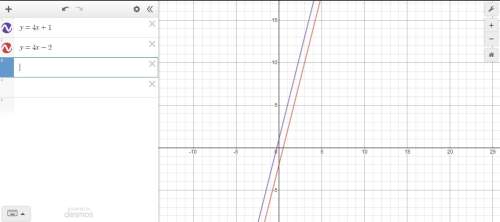
Mathematics, 29.03.2021 16:40 titofigueroa777
Use the discriminant to determine if the following quadratic equations have complex or real solution(s). If an equation has real solution(s), determine the solution(s).
Part A: 4x^2-3x-10=0
part b x^2-14x+49=0
part c g [x]=x^2-8x-20
Part D: h[x]=x^2-9x+36
Part E: 3[x+2]^2+36=0

Answers: 3


Another question on Mathematics

Mathematics, 21.06.2019 17:30
Which of the following is correct interpretation of the expression -4+13
Answers: 2

Mathematics, 21.06.2019 17:30
What number should be added to the expression x^2+3x+ in order to create a perfect square trinomial? 3/2 3 9/4 9
Answers: 1


Mathematics, 21.06.2019 19:30
Write the sine and cosine values of a, b, respectively, in the figure for (1) and (2) + explanation.
Answers: 1
You know the right answer?
Use the discriminant to determine if the following quadratic equations have complex or real solution...
Questions

English, 03.05.2021 03:00



Mathematics, 03.05.2021 03:00





Advanced Placement (AP), 03.05.2021 03:00

Mathematics, 03.05.2021 03:00


Mathematics, 03.05.2021 03:00





English, 03.05.2021 03:00

Computers and Technology, 03.05.2021 03:00





